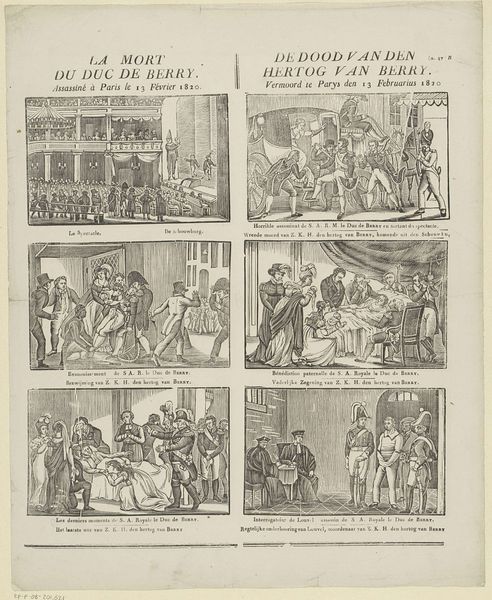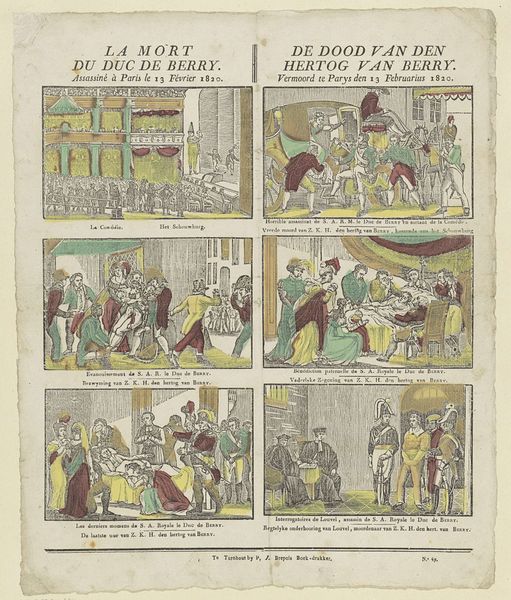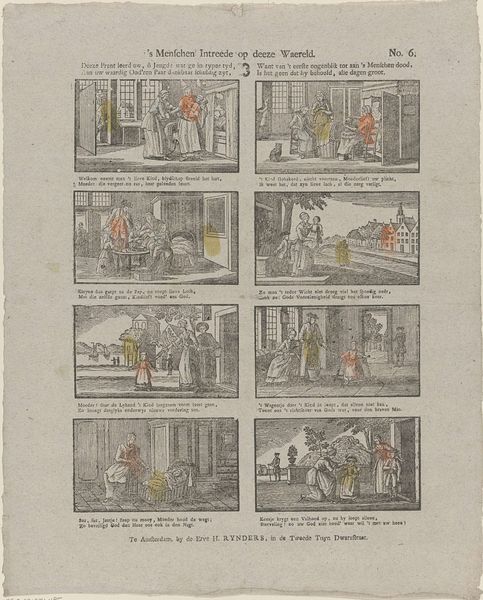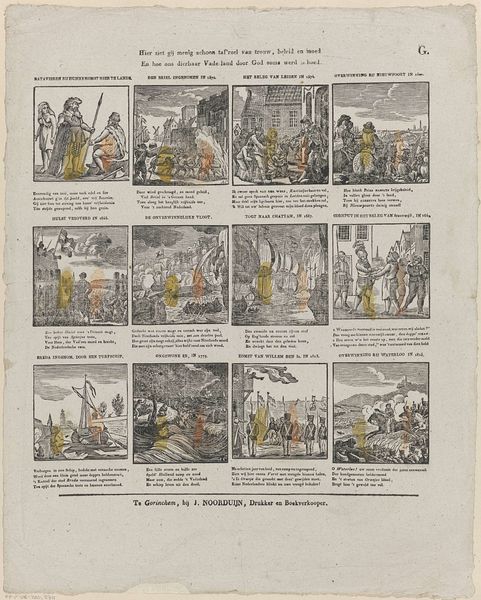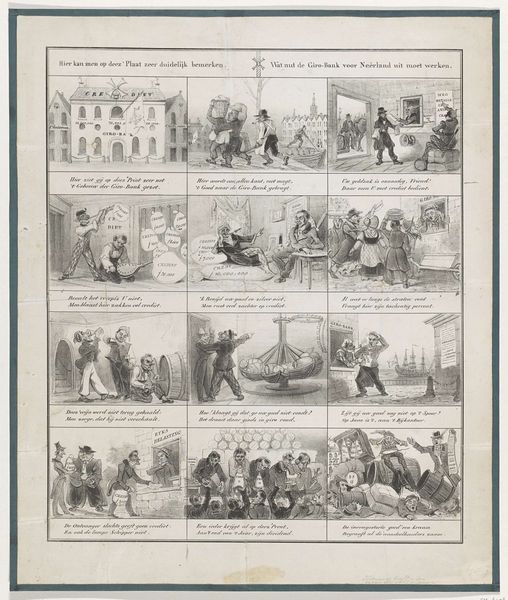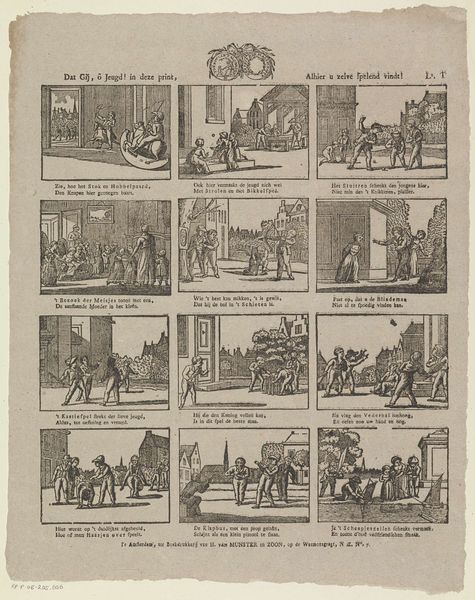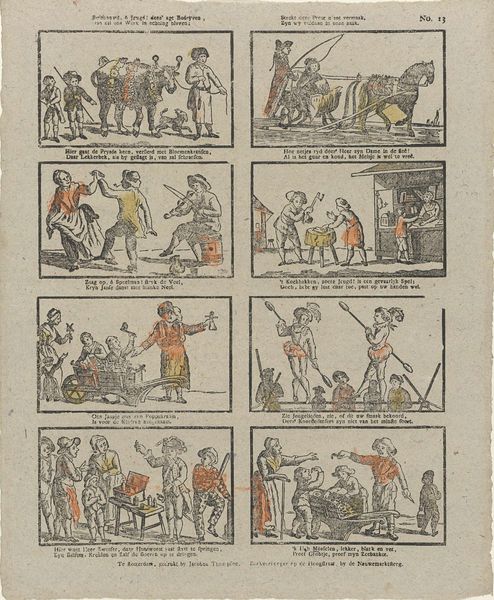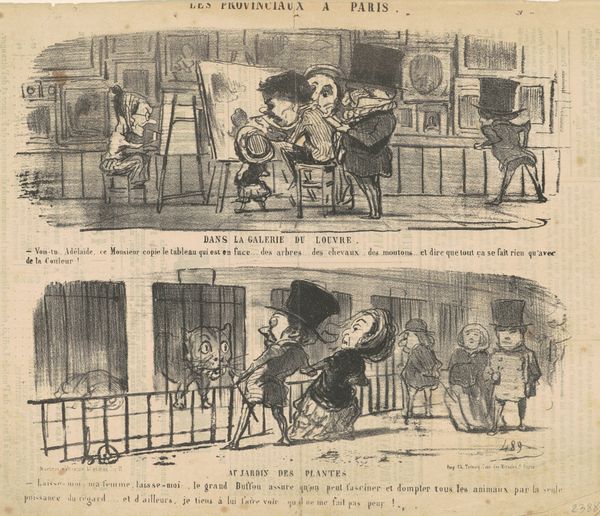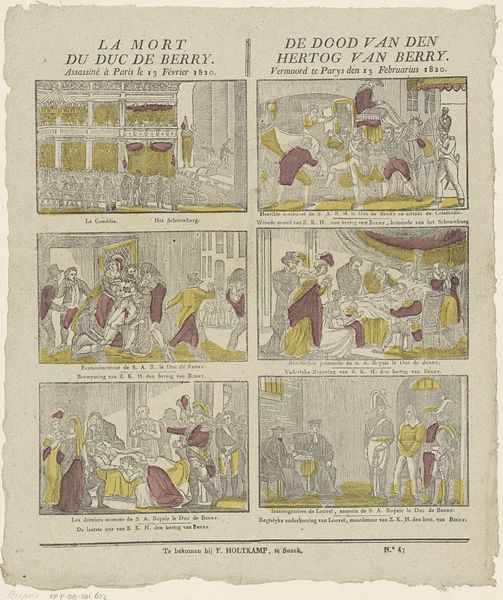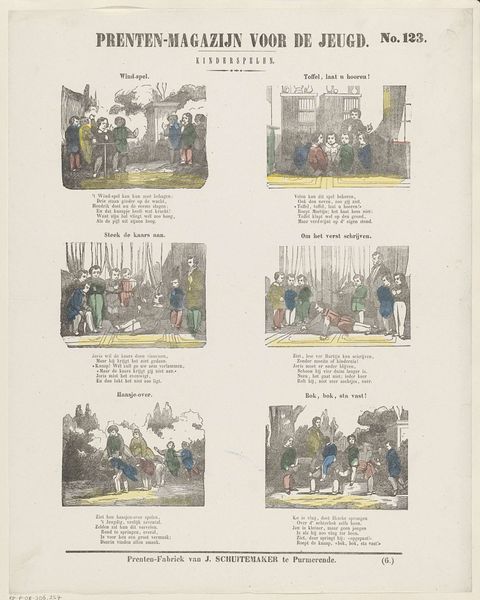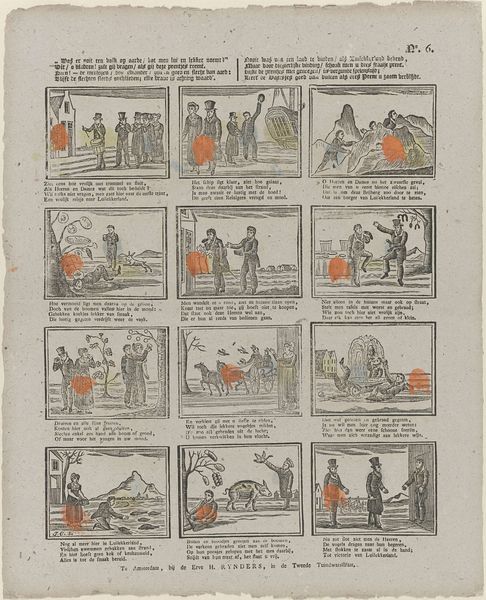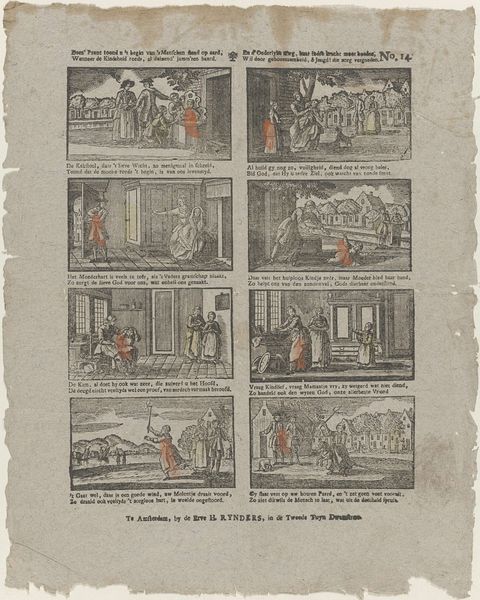
La mort du duc de Berry (...) / De dood van den hertog van Berry. Vermoord te Parys den 13 Februarius 1820 1830 - 1855
0:00
0:00
ervehrynders
Rijksmuseum
print, engraving
#
comic strip sketch
#
narrative-art
# print
#
romanticism
#
comic
#
history-painting
#
engraving
Dimensions: height 395 mm, width 340 mm
Copyright: Rijks Museum: Open Domain
Curator: This is a print entitled "La mort du duc de Berry," dating from between 1830 and 1855, made by Erve H. Rynders. It’s currently held here at the Rijksmuseum. Editor: It reads almost like a…well, a storyboard for a rather grim historical event. There's a chilling formality in the arrangement of scenes. Curator: Precisely. It depicts, in sequence, the assassination of the Duke of Berry in 1820. Note how Rynders employs engraving to segment the narrative. Each frame functions almost as a discrete moment. Editor: I'm immediately struck by the contrast. On the one hand, you have this clean, almost classical compositional approach in each panel. Then you see the dramatic content. A theater, a murder, deathbeds. How were the frames perceived at the time, how did they interact with society? Curator: This was published during a period of significant political upheaval in Europe. The print would have served as a visual tool. The sequential nature allowed for a wider audience, even those who may not have been literate in the traditional sense, to grasp the narrative and political message. Consider also how print culture was instrumental in the dissemination of political sentiment. Editor: I wonder about the intended emotional impact. The romantic undertones are there in the depiction of grief, but is it meant to incite anger, sorrow, or simply serve as a detached record? The aesthetic restraint tempers any overwhelming sentimentalism. Is it merely for instructional use? Curator: Its emotional payload must have been complex and highly ambivalent. Certainly, the Romantic style amplified feelings surrounding the monarchy but there is a disarming formalism to the execution itself. Rynders has carefully modulated these formal characteristics to achieve a degree of historical objectivity. It’s not propaganda, but an ambivalent recounting. Editor: That tight grid-like layout lends an almost clinical quality, wouldn't you say? Each panel neatly contained, allowing a cool, reasoned engagement with a decidedly violent act. Very fitting to consider from a historical lens, offering society's outlook on this period. Curator: I concur, seeing Rynders' work today invites one to reconsider relationships of visual and political media. How does it continue to resonate now? Editor: Exactly. Now seeing this historical object through the formal approach, and the balance achieved, I now understand the object in its artistic qualities, and not just the historical content alone.
Comments
No comments
Be the first to comment and join the conversation on the ultimate creative platform.
